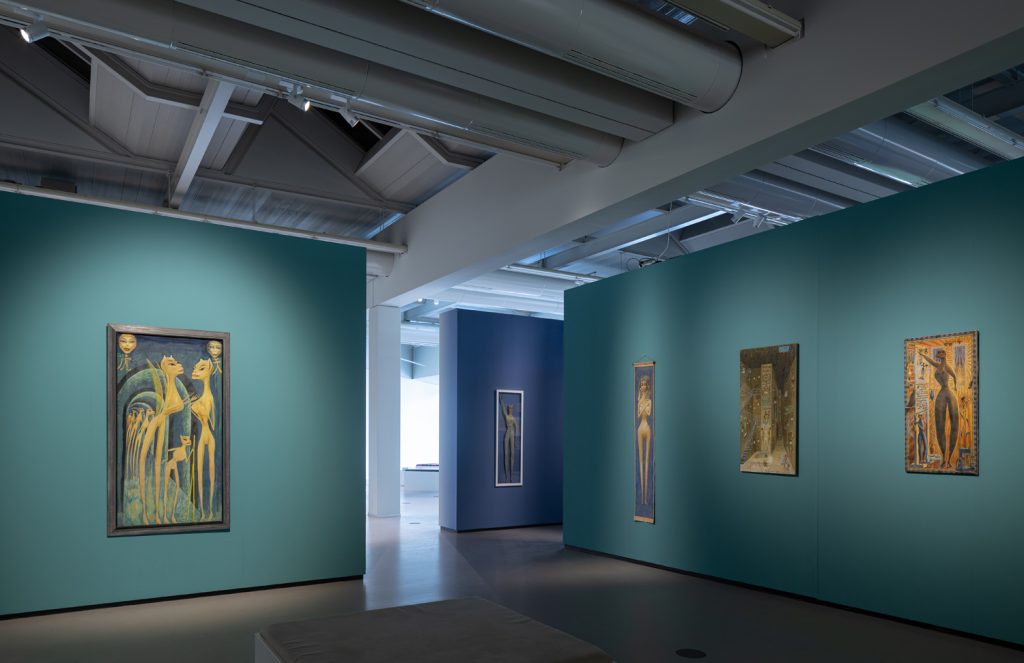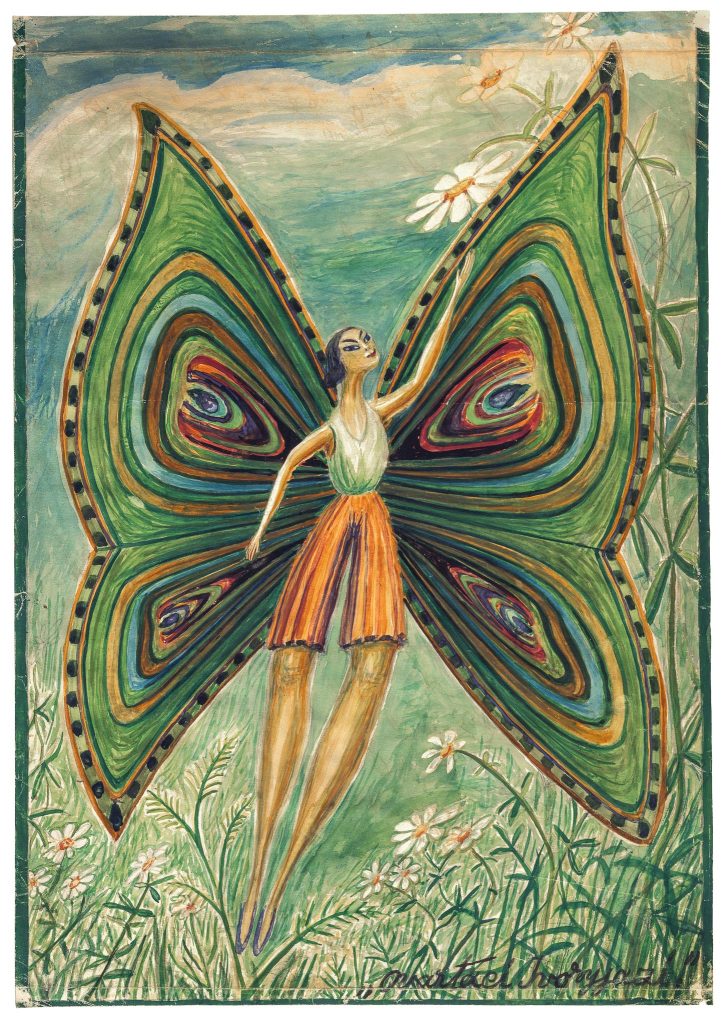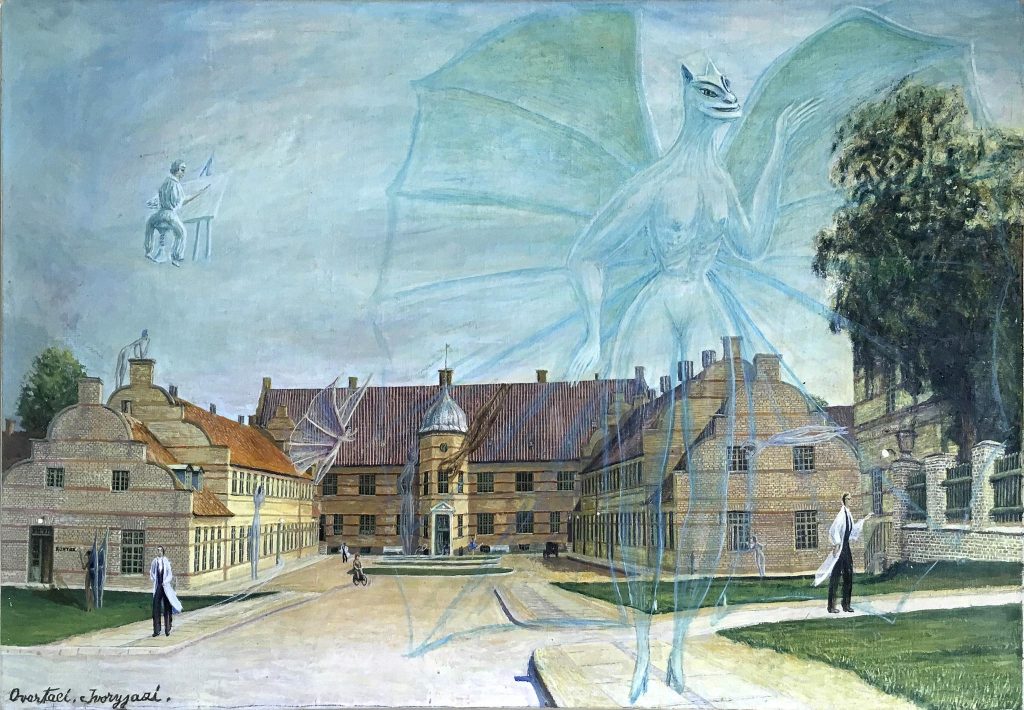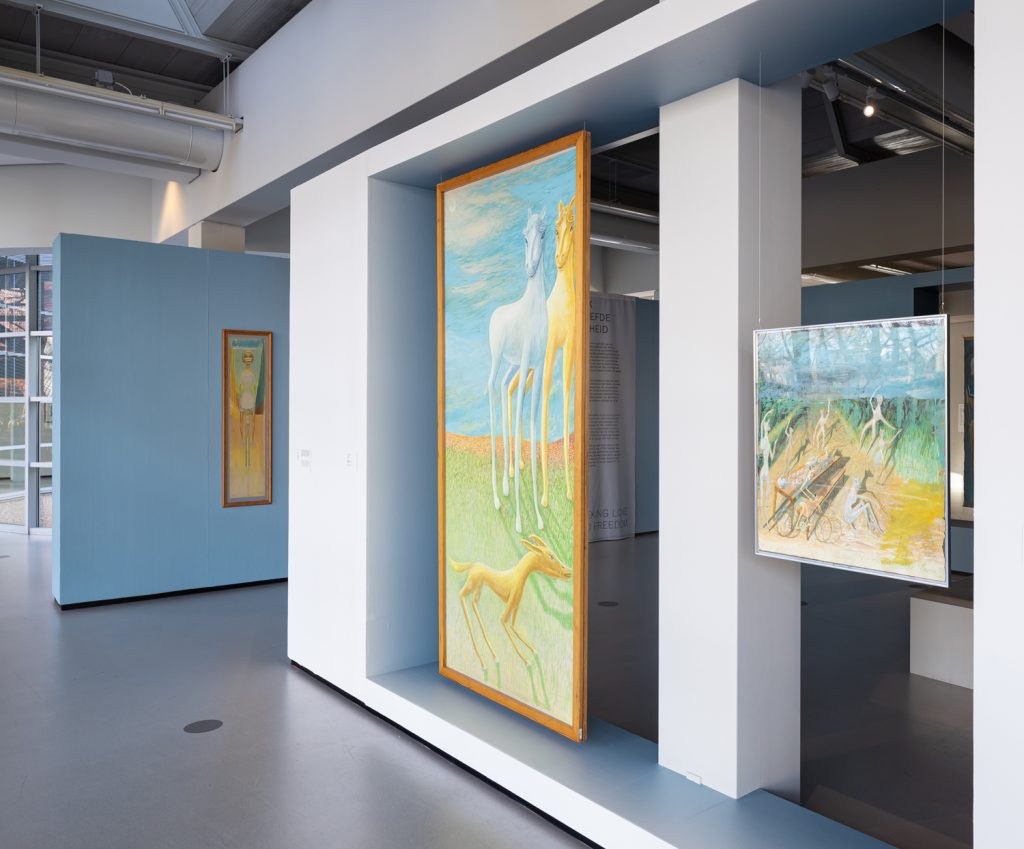Exhibition
Becoming Ovartaci
Featuring more than 70 paintings, drawings and sculptures, the exhibition provides an introduction to the art and life of Danish artist Ovartaci and it is made in collaboration with the Museum Ovartaci in Aarhus, Denmark. The majority of the works in the exhibition are borrowed from private collectors, thus, exhibited to the public for the very first time. The two rediscovered works from the Collection l’Art Brut will also be included in the exhibition at the Cobra Museum for the first time as works attributed to Ovartaci.

A remarkable artist in her own right, Ovartaci (1894-1985, born Louis Marcussen) created a life’s work unified with her own radical life story. Ovartaci’s work raises above any conventional categorization such as expressionism, surrealism, or art brut. Her work poses impeccably contemporary questions of power relations, tolerance, and identity. She was a gifted, self-taught artist, a poet, a world traveler, an intellectual, a psychiatric patient, a dreamer and much more. Her astounding paintings, sculptures, works on paper and wall paintings encompass her entire world. She lived in and with her art.
The exhibition unveils and presents the astonishing story of the art and life of the Danish artist Ovartaci. An extraordinary art historical tale, taking place in the periphery of the Cobra movement (1948-1951).

Ovartaci
Ovartaci was the name she gave herself when forcibly admitted to the psychiatric ward of the Risskov Hospital in Aarhus in 1929. After she was diagnosed with schizophrenia, she spent the rest of her life as a residential patient. The name Ovartaci can be translated as ‘head patient’, a derivative of ‘overtossi’ in the Jutland dialect, ‘overtosse’ in Danish.
Central to Ovartaci’s work is the concept of metamorphosis and transformation. She felt the need to literally transform the world around her into her own universe and into a more beautiful place: she made grand plans to paint not only her own room and furniture, but the entire hospital. During the 56 years Ovartaci lived in the psychiatric hospital, she was given freedom to develop as an artist. Living in a persistent process of art making was her way of coping, being and breathing. She was a firm believer of Buddhism, animism, and reincarnation. Her primary source of inspiration was her many previous lives.
In the early 1950s, Ovartaci expressed a strong desire to transition into a woman. She applied for gender reassignment surgery knowing that she would become herself and find peace of mind. Her request was denied, so she took matters into her own hands and amputated herself in 1954. After this, doctors complete the operation surgically.
Ovartaci transformed her 12 square meter room into an exuberant, imaginary universe. Besides herself it was inhabited by animals and elongated cat-like female hybrids in high heels exploring the world, sailing, flying, dancing and riding bicycles. These hybrids were everywhere, adorning every inch of the walls as giant cutouts, as small sculptures or in paintings. They even materialized as life size dolls and creatures. They were the soul mates, sisters, companions, and life witnesses of the artist living with them in a combined studio, bed and living room. This entire immersive, surreal fantasy world was the real life of Ovartaci.

Discovered
Ovartaci met the acclaimed Danish Cobra artist Asger Jorn in 1952. At that time Jorn was hospitalized at the sanatorium in Silkeborg. Interested in art made by psychiatric patients, he was entirely captivated by the intelligence and the artistic praxis of his peer. Jorn was so taken by Ovartaci’s mesmerizing work that he invited Ovartaci to exhibit in Paris. Ovartaci declined the invitation, but Jorn arranged for her work to be sent to Jean Dubuffet, who included two of her works in his personal collection which later became the foundation of the Collection de l’Art Brut in Lausanne.
The verification of the two works in the Collection de l’Art Brut in Lausanne has, however, been an unsolved mystery for a long time, as it has not been possible to detect them in the collection’s database. This remained the case until July 2022 when the two works were identified by guest-curator Naja Rasmussen during the researching and curation of the exhibition Becoming Ovartaci at the Cobra Museum. The works had been missing 60 years asthey had been filed under the name ‘Gonzales’ and not ‘Ovartaci’. A name that Ovartaci would also frequently use.

Revelation of the Biennale di Venezia
In 2022, thirty-seven years after her death, Ovartaci is gaining major international acclaim as part of the 59th Biennale di Venezia exhibition The Milk of Dreams. Some even appointed Ovartaci as that year’s revelation and greatest find.
Richly illustrated catalogue
The exhibition Becoming Ovartaci is part of the anniversary year of Cobra 75 and, together with the exhibitions We Kiss the Earth. Danish modern art 1934-1948 and Je est un autre. Ernest Mancoba and Sonja Ferlov form a triptych on Danish modern art. The three exhibitions are accompanied by a richly illustrated catalogue compiled by the guest curators and published bilingually (Dutch and English) by Waanders Uitgevers. The book with We Kiss the Earth is available at the Cobra Museum shop, among others.

Guest curator Naja Rasmussen
Becoming Ovartaci is curated by Naja Rasmussen chief curator at Kunstmuseum Brandts in Odense, Denmark. Before that, she was chief curator at ARKEN Museum of Modern Art in Ishøj. She has published numerous scientific articles on modern and contemporary art in Danish and international catalogues, and art publications.
Celebrating Cobra 75
2023 marks 75 years since the revolutionary Cobra movement was founded in Paris. The Cobra Museum of Modern Art in Amstelveen is celebrating this anniversary year with a major exhibition programme. Cobra (1948-1951) was an international movement of young, progressive artists creating colourful, expressive-spontaneous art. In the years after World War II, they caused a revolution: a breakthrough in modern art that continues to this day in artistic conceptions and artistic expressions. The name Cobra is a composite of: Copenhagen, Brussels and Amsterdam. The capitals where the founders of this artist group originated. These include Jorn from Denmark, Dotremont and Noiret from Belgium, Appel, Corneille and Constant from the Netherlands. Besides these big names, the Cobra Museum makes a strong case for an inclusive approach to the Cobra movement and regularly adds to the traditional Cobra canon. In 2019, for example, there was a major exhibition “New Nuances” specially dedicated to women artists in and around Cobra.
With thanks to
The anniversary programme Cobra 75 has been made possible by our partners and generous supporters. We especially thank the municipality of Amstelveen, VriendenLoterij, Trebbe, BPD, Rabobank Amstel & Vecht, Hizkia, Prins Bernhard Cultuurfonds, New Carlsberg Foundation, Embassy of Denmark, KEIM and the Cobra Business Club.
Artist talk: cartoons as an act of resistance



